Kortrijk: Belgium’s linen capital is rich – and not just beer and chocolate
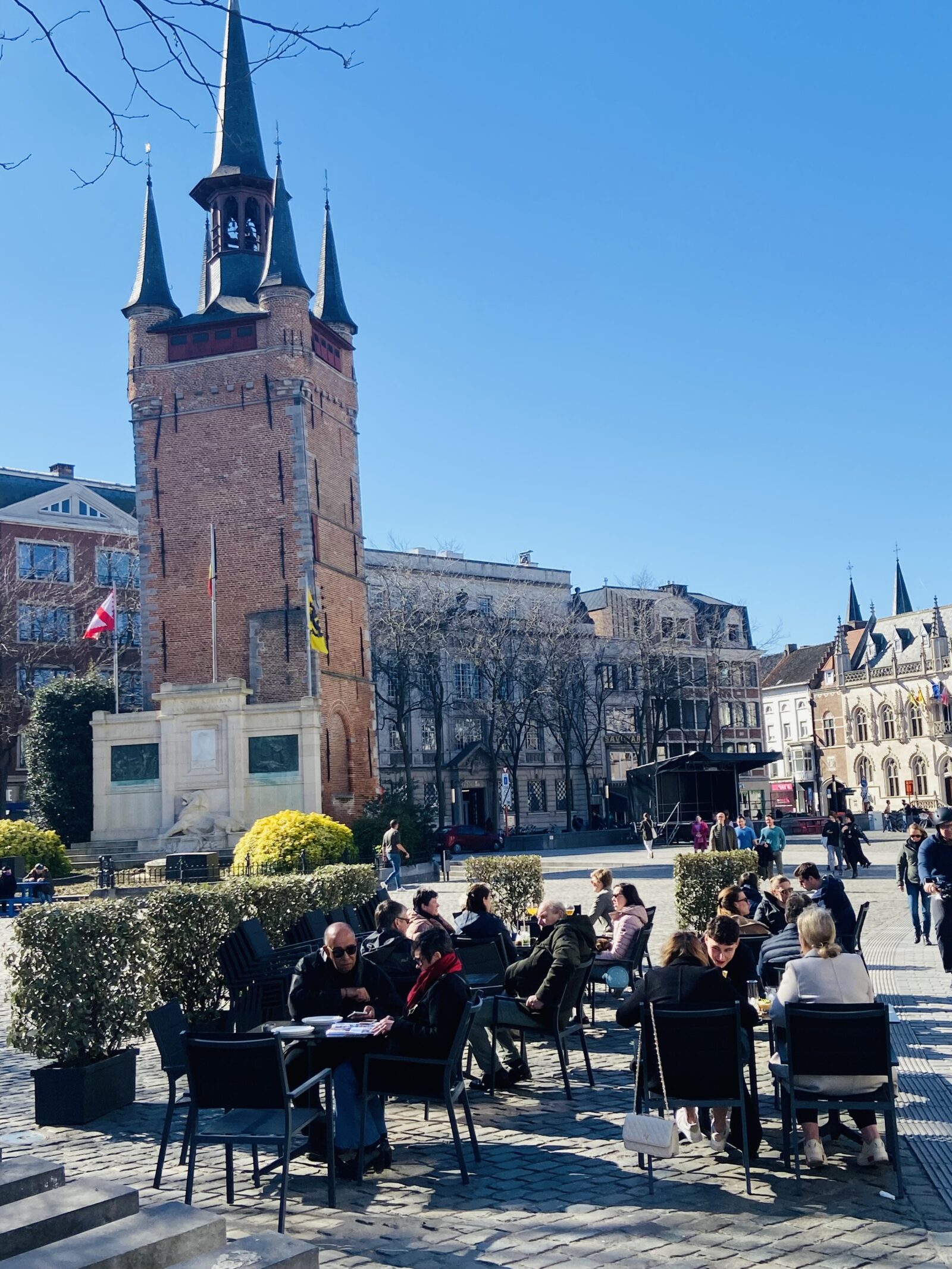
KORTRIJK, Belgium – Belgium is my guilty pleasure.
It is my protein bar at 4 in the morning. It’s my burger and beer at my soccer pub. It’s my afternoon nap on a beautiful day in Rome.
But every time I dive into that bottomless well of Belgium’s tongue-tickling chocolate and mind-numbing beer a smirk emerges on my face. Then I go sit by a lazy canal and tip an 8-percent beer to my lips.
Even better than Belgian beer and Belgian chocolate are Belgians, period. Next to Italians, they’re the nicest people I’ve met in Europe. They have this light-hearted look at life where they laugh as much as they talk and can make you laugh just as hard – in their third language.
They counterbalance their chocolate and beer consumption with cycling. They ride their bikes like Americans drive cars. I’m surprised the country even has sidewalks. It’s like Vietnam with heavy dashes of malt, barley and cocoa. Thus, Belgium has hardly any obesity. In fact, according to the Organisation for Economic Co-operation and Development, as of 2018 only 16 percent of Belgians were obese. That’s 22nd out of 33 European countries. (Iceland was highest at 27 percent, Italy was 32nd at 11 percent and Romania lowest at 10 percent. The U.S., is, ahem, 42 percent, highest in the developed world.)

And just like a box of Belgian chocolates, each town is its own surprise.
I recently added to my list Kortrijk, a town I couldn’t even pronounce let alone heard of until The Dallas Morning News sent me there on assignment. A town of about 76,000 people 56 miles (94 kilometers) west of Brussels, Kortrijk (pronounced COURT-richt) has medieval trappings everywhere, from a towering belfry in an enormous market square to two matching towers flanking a romantic bridge, the last remains of what was a medieval city wall.
Kortrijk has emerged from centuries of defeats, destruction, rebirths and economic devastation to become one of the wealthiest cities in a wealthy country. Its region of West Flanders, the Dutch side of Belgium, is the fourth richest region in Belgium with an average Gross Domestic Product of 48 billion euros a year. Who knew textiles could be such a lucrative business?
Kortrijk doesn’t have the international cache of Brussels or the outlandish riches of Antwerp or the romantic air of Brugge, my favorite mid-size city in Europe. But it’s what I looked for as a side benefit to a work assignment: An honest Belgian city off the beaten path with real Belgians and a true everyday city vibe.
And the beer and chocolate are pretty good.

Getting there
It wasn’t easy. Due to Ryanair’s cost-cutting aerial flotilla, I flew out of Rome’s Ciampino Airport, catering to discount airlines, to Charleroi South, Brussels’ equivalent airport 30 miles (45 kilometers) south of Brussels. After two hours in Ryanair’s cattle car, I took an airport bus 15 minutes to the Charleroi train station where I took a train to Brussels for 50 minutes, changed trains and went another 50 to Kortrijk, arriving about four hours after I left Rome.
I walked 15 minutes down Belgium’s first pedestrian mall to my AirBnB. My passion for Belgian beer started a slow froth in my mouth as I passed people drinking beer at sidewalk bars on a sunny, crisp day.

My AirBnB was lovely. A big, airy living room with a balcony overlooking a green park and Groeninge Port. It’s a stone gate built in 1908 commemorating the 600-year anniversary of the Battle of the Golden Spurs, Kortrijk’s most significant historical event that was fought in the field just beyond the gate.
A restaurant was to my right. A bakery to my left. The town center was straight ahead. I set my backpack down and looked at my cellphone. Then I realized something.
It was St. Patrick’s Day.
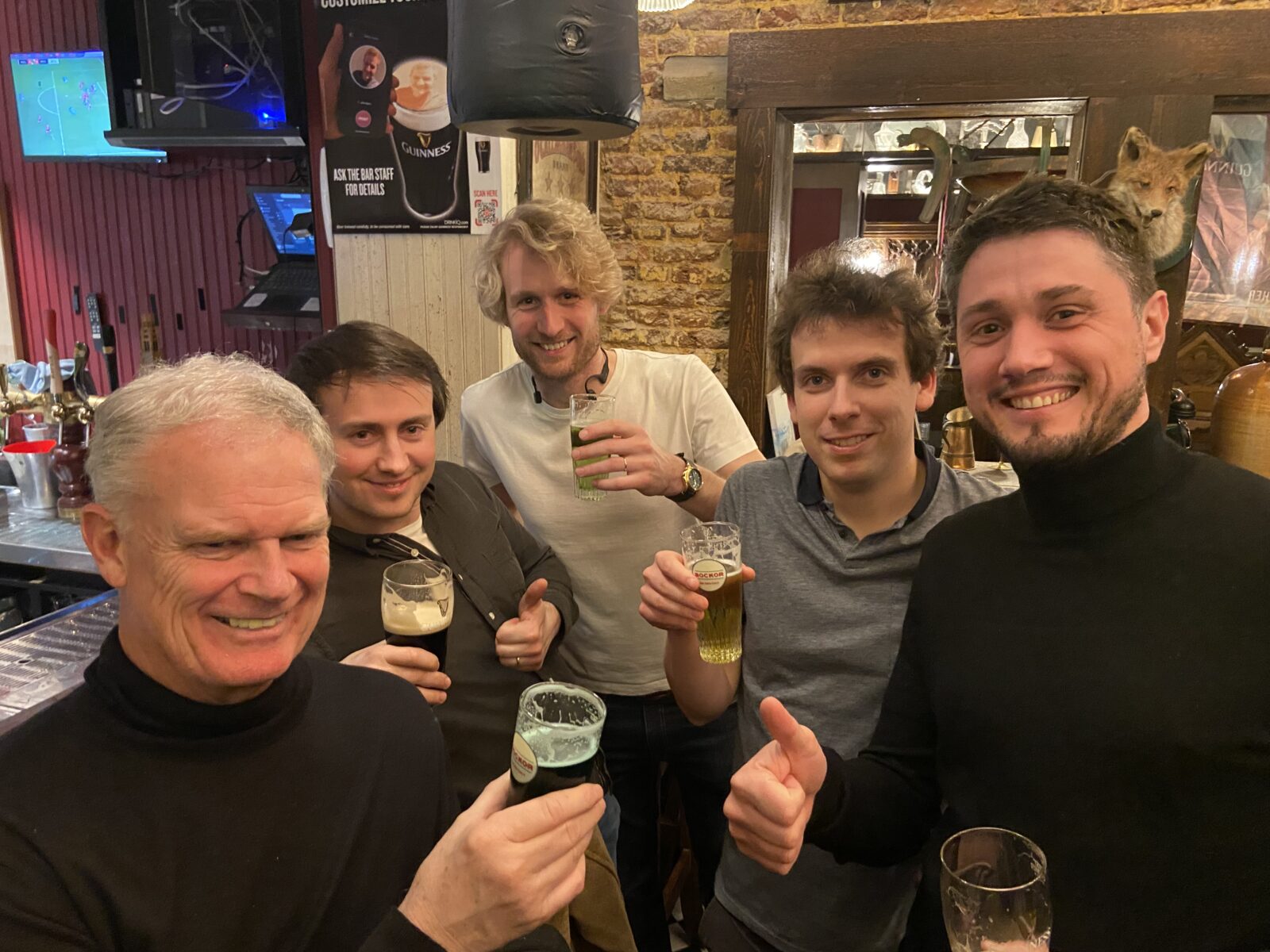
St. Patrick’s Day
St. Patrick’s Day in Belgium. That just sounds dangerous, doesn’t it? Kind of like New Year’s Eve in Belfast (which I did in 2018) or birthday in Beirut (also guilty: 2019) I like a night out when the biggest decision I have to make is whether to drink Belgian beer or Guinness.
Kortrijk is so Belgian, it has only one Irish pub. Irish Mary’s sits on a side street near the Broeltorens, beautifully back lit over the River Leie. Normally, I avoid St. Patrick’s Day like a Buddhist monk. I’m a quarter Irish but St. Patrick’s Day is amateur night. That’s when everyone from Barstow to Beijing becomes Irish. Unfortunately, they can’t drink like the Irish.
But St. Patrick’s Day in Kortrijk was comfortably subdued, like the veteran, mature drinkers that Belgians are. A decent gathering of couples and friends gathered soberly at tables near the oddest bar I’ve ever seen in an Irish pub. It consisted of just two large windows with room for only three bar stools each. Everyone else had to lean over people to order.
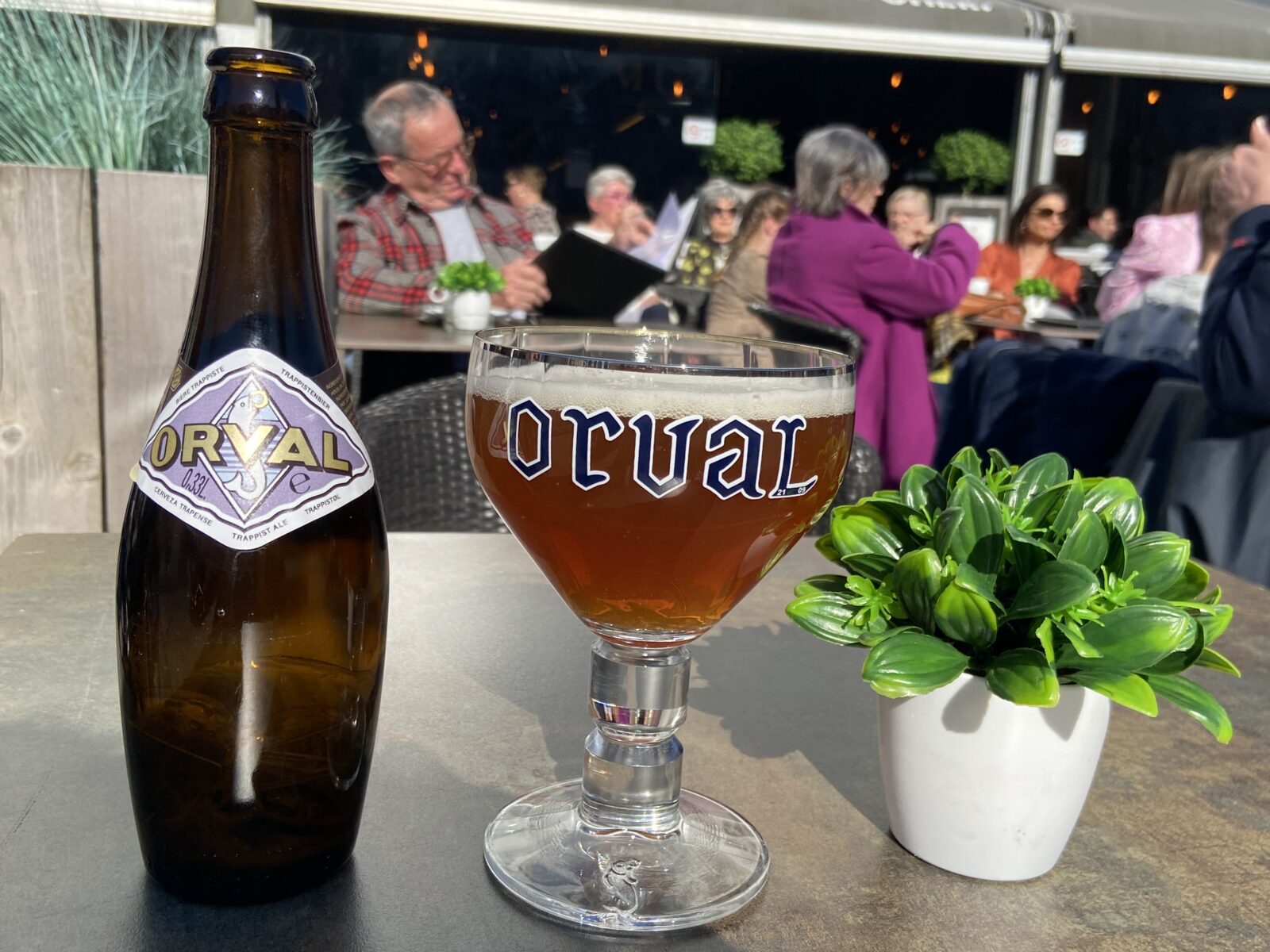
I leaned through a group of guys in their 20s. I told them I was in town to write a story about Bryan Reynolds, an American from Fort Worth, Texas, playing for KV Kortrijk, the local pro soccer team that has never won a trophy in its 121-year existence.
We discussed soccer, politics, Belgium and beer. They introduced me to Orval, which one called the best beer in Belgium and he was right. But mostly we laughed. I asked one guy who looked younger than his 23 years, Alexander Detremmerie, about Belgians’ sense of humor.
“We make fun of ourselves,” he said in flawless English. “We’re a small country. We know we don’t represent a lot in the world. We are humble and we kind of see the humor in that.”
I asked what he likes about his hometown.
“By American standards we’re a small city but we have everything we need here,” he said. “Many people, myself included, come back from the larger Flemish cities. Our social lives are organized here. For me, that’s a big draw to come back.”
He asked me if I was from Dallas. I explained the life of the freelance writer, how a guy in Rome can write for a paper in Texas. He said, “This part of Flanders is a very good example of self mockery as we call this the Texas of Flanders because there’s almost no unemployment here. We’ve got many big companies.”

My Guinness arrived and he asked if I had a picture of myself. Taken a bit aback, I showed him one on my cell phone. He took the phone and put it in a tall contraption on the bar with “Guinness” emblazoned on it. The bartender took my pint and put it on a small shelf in the machine and raised it to the top.
When he returned it and my phone, amazingly, I had my face imprinted in the foam. For an added touch, they superimposed a Leprechaun’s hat on my head. The contraption is called a Stoutie, a Guinness invention from 2018 that has increased its number of first-time Guinness drinkers by 20 percent.
Unfortunately, I couldn’t keep it. I drank it instead.

No coffee culture
Nursing a savage hangover the next morning and remembering why I don’t like St. Patrick’s Day, I poured myself onto the street to find a cappuccino, a welcome addiction I picked up after eight years in Rome. It was 8 a.m. on a Friday. The walking mall was empty. Dead. It could’ve been dawn in a ghost town.
Not one cafe was open. Each one had signs saying they open at 9:30 or 10 a.m. Bakeries were open selling all kinds of cakes, pastries and muffins but no coffee. I saw a big, bearded man in a large, modern cafe with outdoor seating. He politely told me to come back in an hour and when I did the next day, I asked him why it’s easier to get a beer at 8 a.m. than a cup of coffee. He said there’s a work ethic here that matches anything in Northern Europe. Frankly, they just don’t have time.
“Everybody goes to work at 8,” he said. “No one goes out for coffee. Maybe in Antwerp and Brussels where many work at home, they open earlier. But not here.”
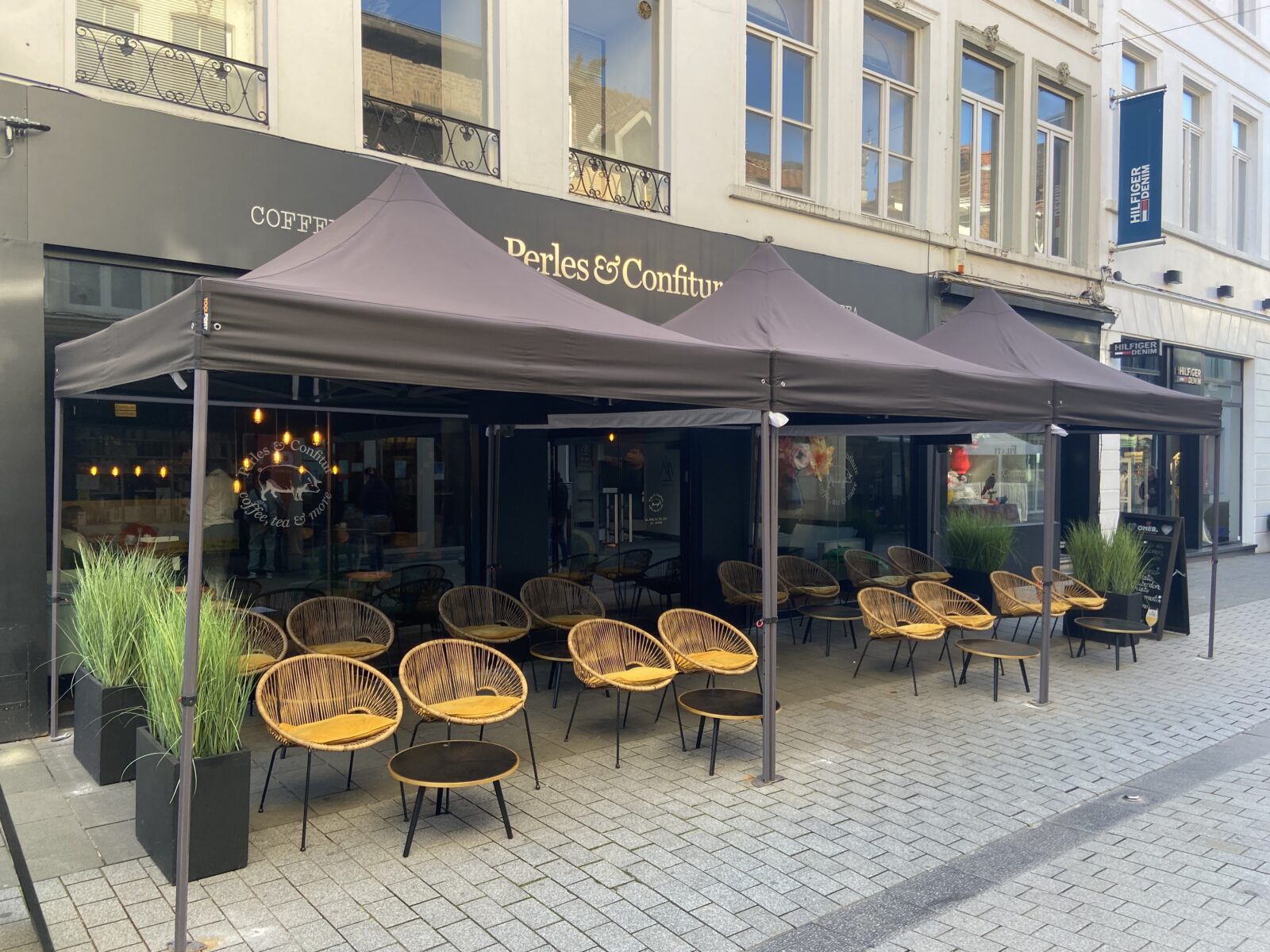
Frank Verschuere is typical of Kortrijk’s entrepreneurism. Three years ago he opened a cafe called Perles & Confiture to supplement his income from his manufacturing business of coffee cups and dishes called Brick in the Wall. (Needless to say, his cafe has none of those disgusting paper cups, a true bastardization of American culture.) He’s part of the Kortrijk manufacturing scene, a tradition that dates back to the Middle Ages when the kings of England and France wore linens from Kortrijk, then the linen capital of Europe.
I asked what he tells people about Belgium.
“This is paradise,” he said. “Everything is here. Everything is at the top. Best quality of doctors, surgeons. There’s a lot of industry here in Kortrijk. There’s a good quality of foods.”
And his cappuccino is really good.
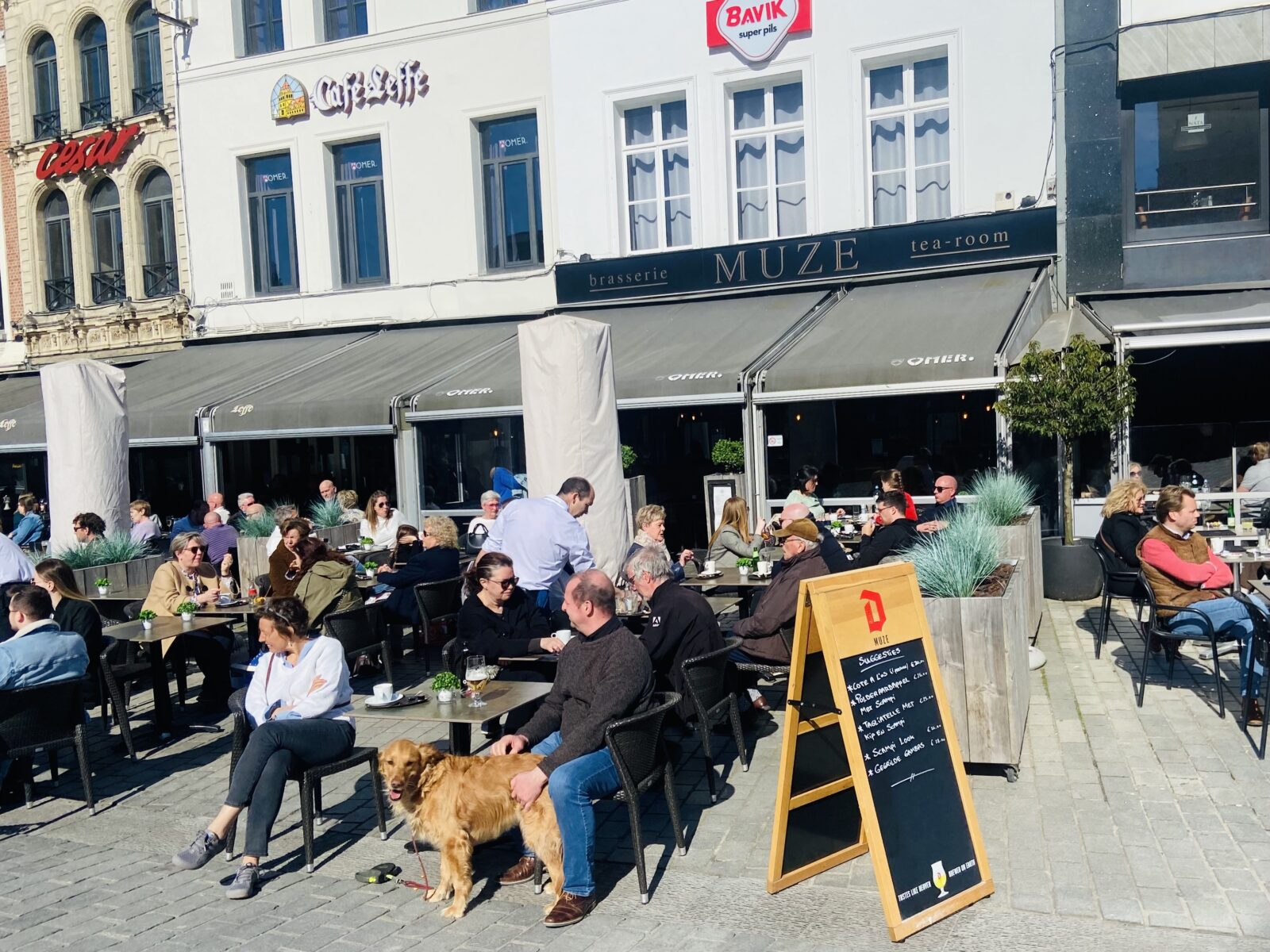
The sites
Like Italy, the pulse of many Belgian cities is based around a central piazza. The Belgians call them markts. Kortrijk’s Grote Markt is a massive curved brick space lined with restaurants and cafes all with outdoor seating. I took a seat at a crowded bar on a Saturday afternoon and had a lousy cappuccino.
The coffee stunk but the scenery was good. Well-heeled, well-dressed locals in designer shades filled tables drinking French wine, German beer, Italian coffee and pastel-colored cocktails. A mix of Dutch and French filtered through the air but no English. A fit blonde woman on a bike rode past my table talking on her cellphone.
The modern trappings take nothing away from the historical significance of Grote Markt. It once was the site of the Cloths Halls which were built in 1410 to store many of the linens they sent around Europe. They stood around the Belfry, a 92-foot, four-spire, jet-black tower that looks like four witch hats hovering over the square. Built in 1307, it housed a treasury and municipal archives and served as an observation point for fires and danger. It’s now on the UNESCO World Heritage List and the city’s most recognizable symbol.
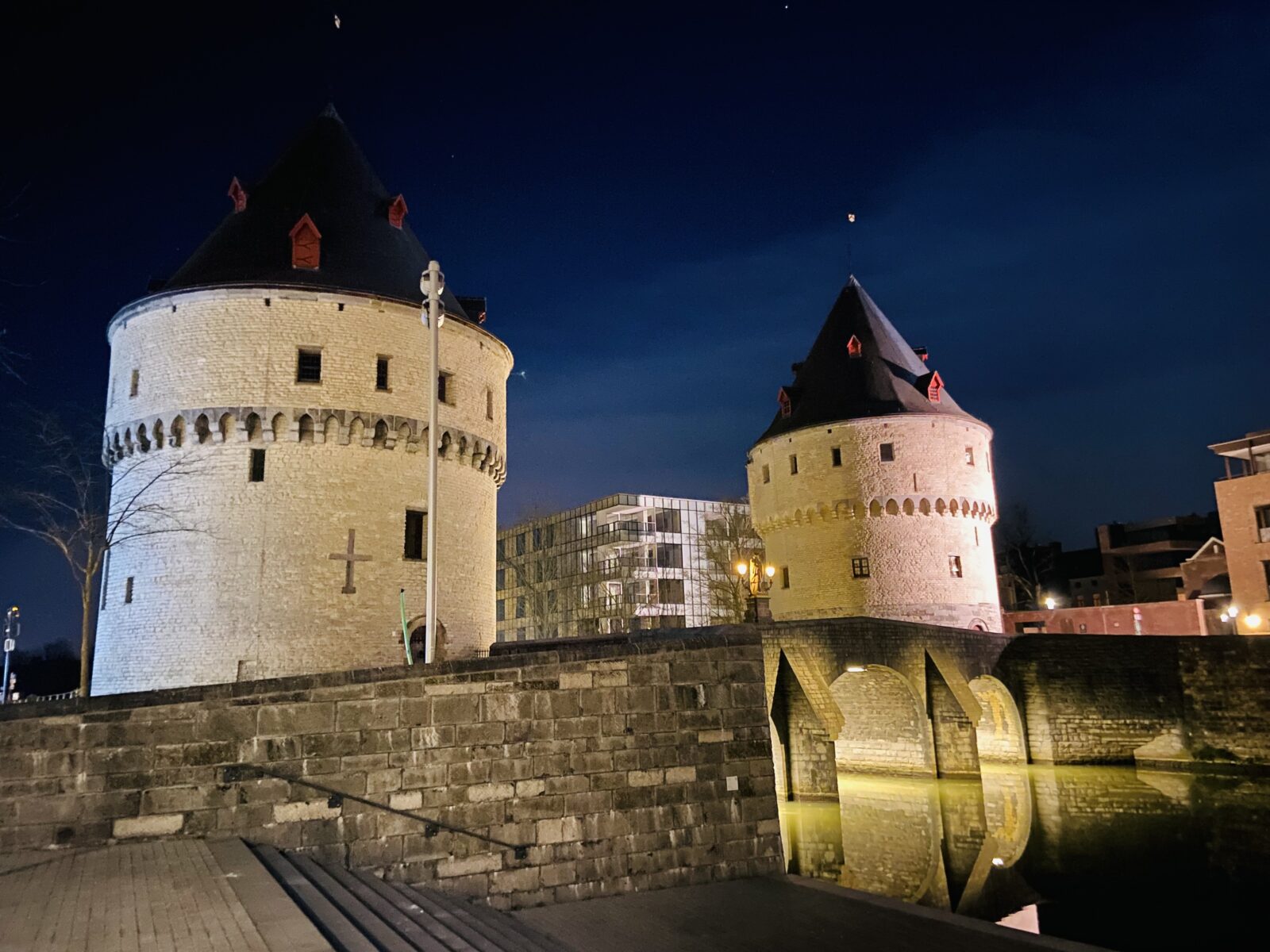
A close second are the Broeltorens. A five-minute walk from my AirBnB, they are two matching sandstone and limestone, cylinder towers with pointy roofs that span a stone bridge over the Leie. The south tower was built in 1385 to control river traffic and the north tower from 1415 was used as an armory.
They also are the last remains of a civic defense system much needed during a time of war and destruction. The French had annexed Flanders in 1300 and on May 18, 1302 the locals massacred all the French in town which didn’t go over well in France only eight miles to the west.
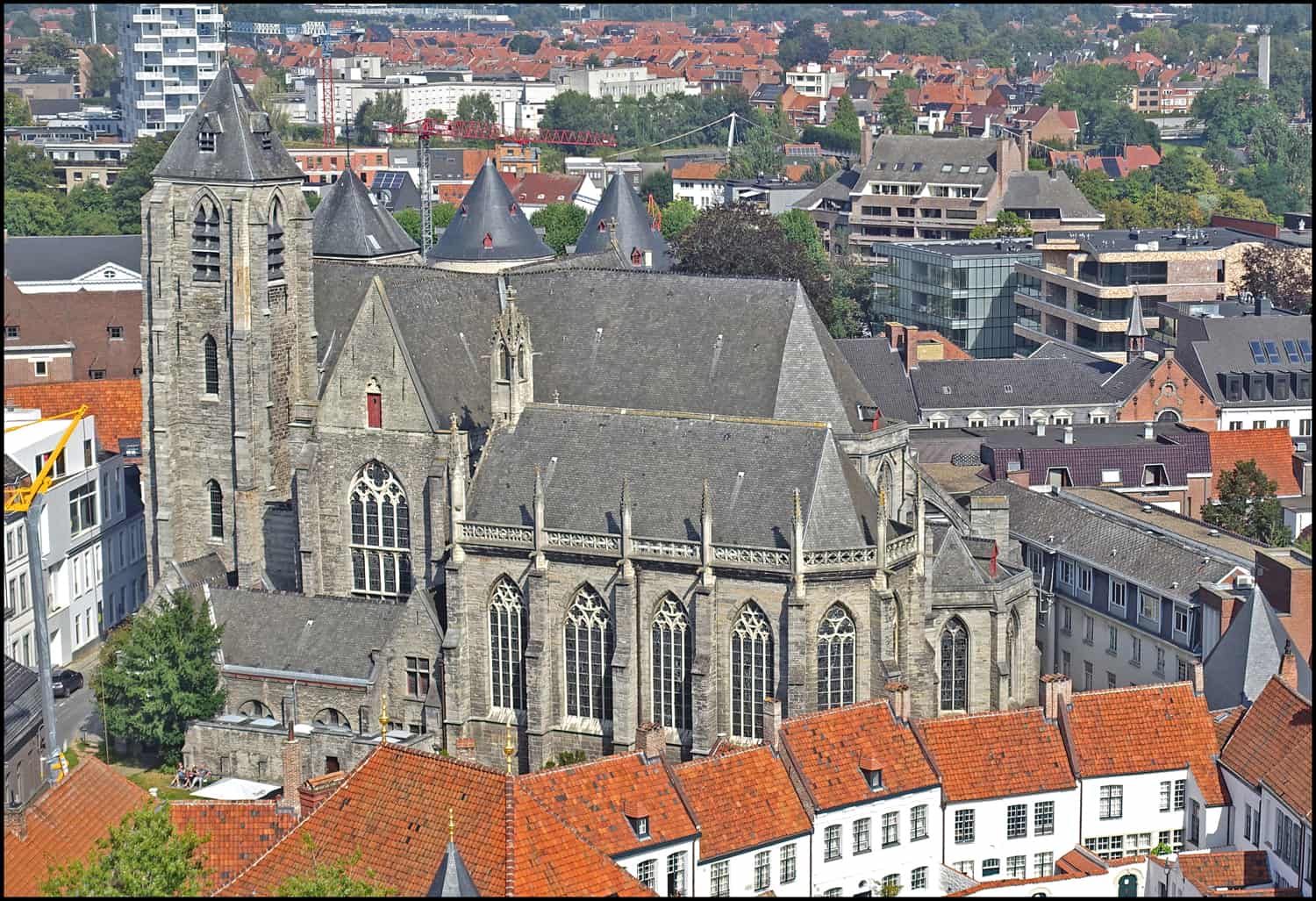
On July 11, the French invaded. But the local men, mostly farmers, commoners and tradesmen, disguised a boggy marsh with brushwood. The French soldiers’ horses got stuck in the mud and the soldiers were slaughtered. After the battle, the locals took 700 pairs of golden spurs off the dead Frenchmen’s uniforms and hung them in Onze Lieve Vrowekerk (Church of Our Lady), a church that still stands. Eighty years later, the French, still pissed off, returned, burned the city and retrieved the spurs.
However, the battle’s lore remains. Known forever as the Battle of the Golden Spurs, it became an everlasting symbol of Flemish resistance and is still celebrated every year on July 11 as a Flanders national holiday.
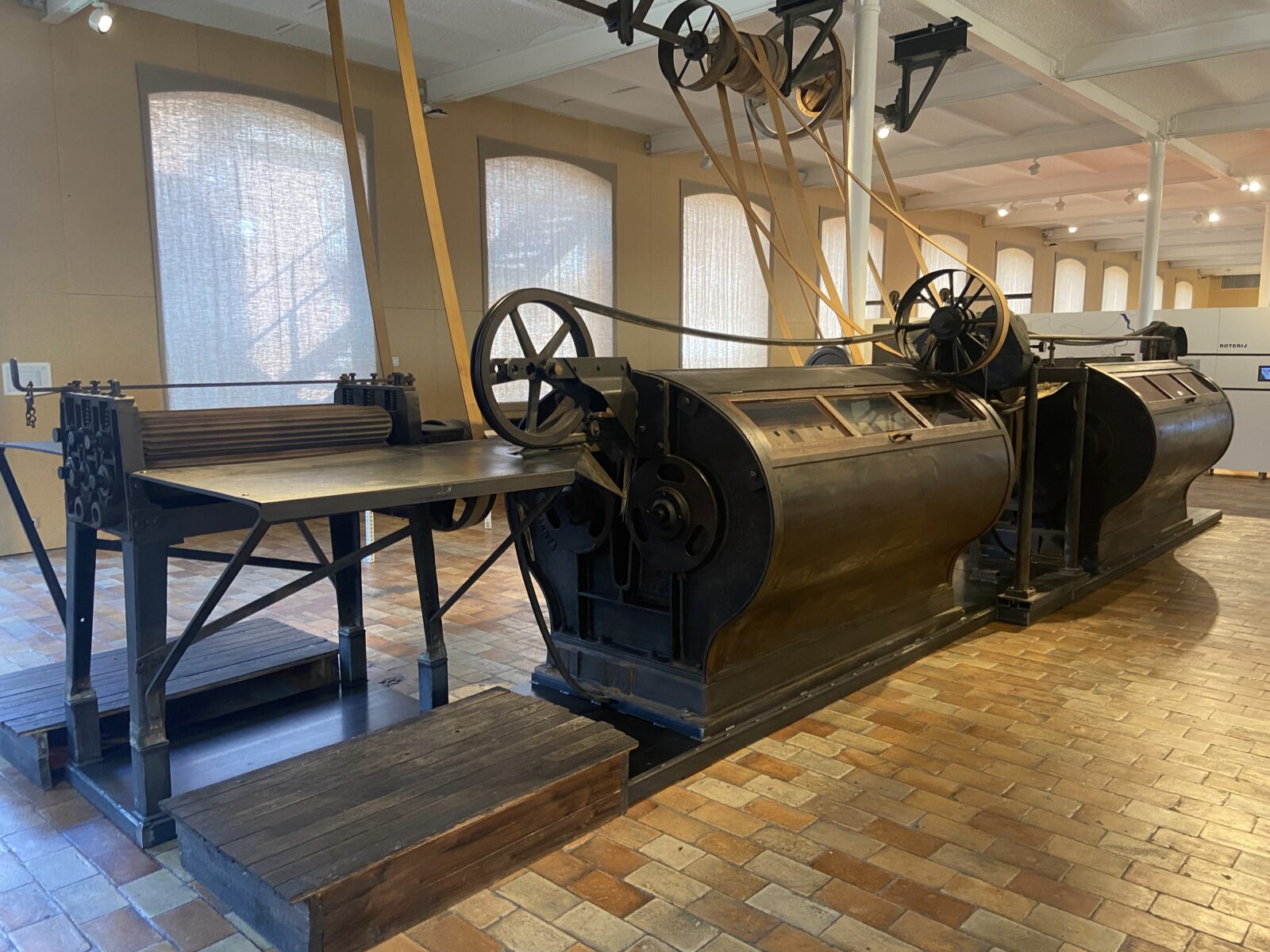
Linen industry
I couldn’t help noticing how Kortrijk looked so prosperous. The city and people aren’t pretentious. They’re humble and happy. The streets are spotless. Travel writers have knocked its architecture for being too much of an odd blend of medieval and modern but no one can deny it’s wealthy.
It all stems from textile manufacturing that started putting Kortrijk on the map in the Middle Ages. To this day, the road between Kortrijk and Brussels is lined with flax fields. The flax is what linen comes from and Kortrijk became the international center for linen and lace. Look at Belgian paintings and linen and lace were symbols of the rich and famous for the nobility and bourgeoisie. King Charles V was a top client.
Kortrijk flax is considered the best in the world and the industry exploded from the end of the 15th century to the 19th century. But the Industrial Revolution arrived and linen, made by hand, couldn’t keep up. The world turned to English cotton and the linen industry flopped.
However, Flanders cities began focusing on other areas made from the versatile flax such as brushes, shoes, lace. A flax processing industry sprouted.
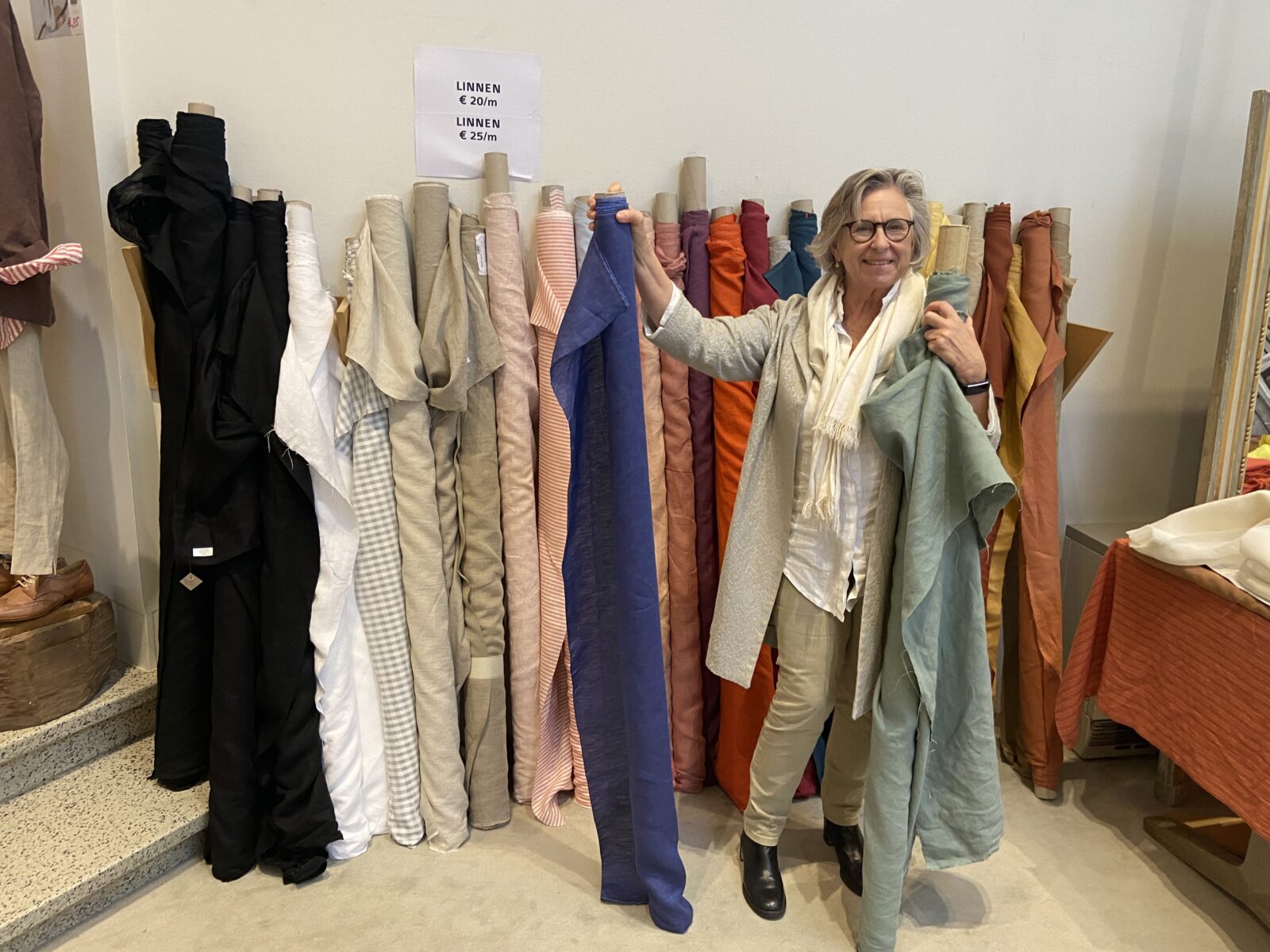
The Texture museum, built in an old linen depot building on the Leie, has everything from flax machines to drawings of royalty in Kortrijk linen to a room filled with flax-made items: mailbags, blankets, military uniforms. Later that day, I went to one of Kortrijk’s many linen stores, Stoffen, and bought my girlfriend matching linen placemats and napkins.
And, of course, chocolate. I bought us lots of chocolate.
The future
Everything is looking up in Kortrijk. Belgium itself survived Covid quite well. Its number of active cases dropped from 1,136,138 on Feb. 6 to 253,020 on Saturday. Masks are only mandatory on public transportation and Kortrijk is once again attracting tourists on weekends.
It has become a Flanders music hub and concerts are returning ranging from pianist Jan Swerts to Spoil Engine. It’s planning a third major arts festival in 2024 and has applied to become a European Capital of Culture for 2030.
Outside of Italy and Greece, Belgium has become my favorite country in Europe. The best beer and chocolate in the world and some of the planet’s nicest people. In Kortrijk, what’s one more guilty pleasure?

If you’re interested in going …
How to get there: Numerous trains leave from Brussels Airport and Brussels Midi station. About 50 minutes direct. $7.
Where to stay: AirBnB, Plein 16 Residentie Park, https://abnb.me/9KbnCLfaKob. Big airie apartment with large bedroom, kitchen facilities and excellent heater. Ten minutes from Grote Market. I paid 289 euros for four nights.
Where to eat: Parkhotel, Stationsplein 2, 32-56-22-0303, https://www.parkhotel.be/nl/bistro/bistro-kortrijk, info.parkhotel@parkhotel.be, 11:30 a.m.-2:30 p.m., 6-10 p.m., 6-9 p.m. Sunday. Elegant restaurant in four-star hotel by the train station. My sea bass and two glasses of wine were 39 euros.
Mouterijtje, Kapucijnenstraat 25a, 32-56-20-1414, https://www.mouterijtjekortrijk.com, mouterijtjekortrijk.@gmail.com, 11:30 a.m.-2 p.m., 6-9:30 p.m. Friday-Tuesday. Dutch for “Malthouse,” this brasserie is built in former brick brewery and features lots of fish and Flemish dishes.
When to go: July is warmest month with average high of 74 and low of 56. January is 43 and 34 with 11 days of rain. My days in March were high 30s to mid-50s and sunny.
For more information: Toerisme Kortrijk, Leiestraat 21, 32-56-27-7054, https://www.toerismekortrijk.be/nl, 10 a.m., tourisme@kortrijk.be, 10 a.m.-5 p.m.


April 1, 2023 @ 1:28 am
Enjoyed your article.
April 14, 2023 @ 8:42 am
Thanks, Carl-Jan.
August 3, 2024 @ 10:21 am
What an interesting article, I’m glad I came across it as I am visiting Kortrijk in 2 days time.
Thank you for such an informative post.
August 3, 2024 @ 10:46 pm
Thanks, Geo. Definitely go to Mary’s. You’ll meet lots of locals.